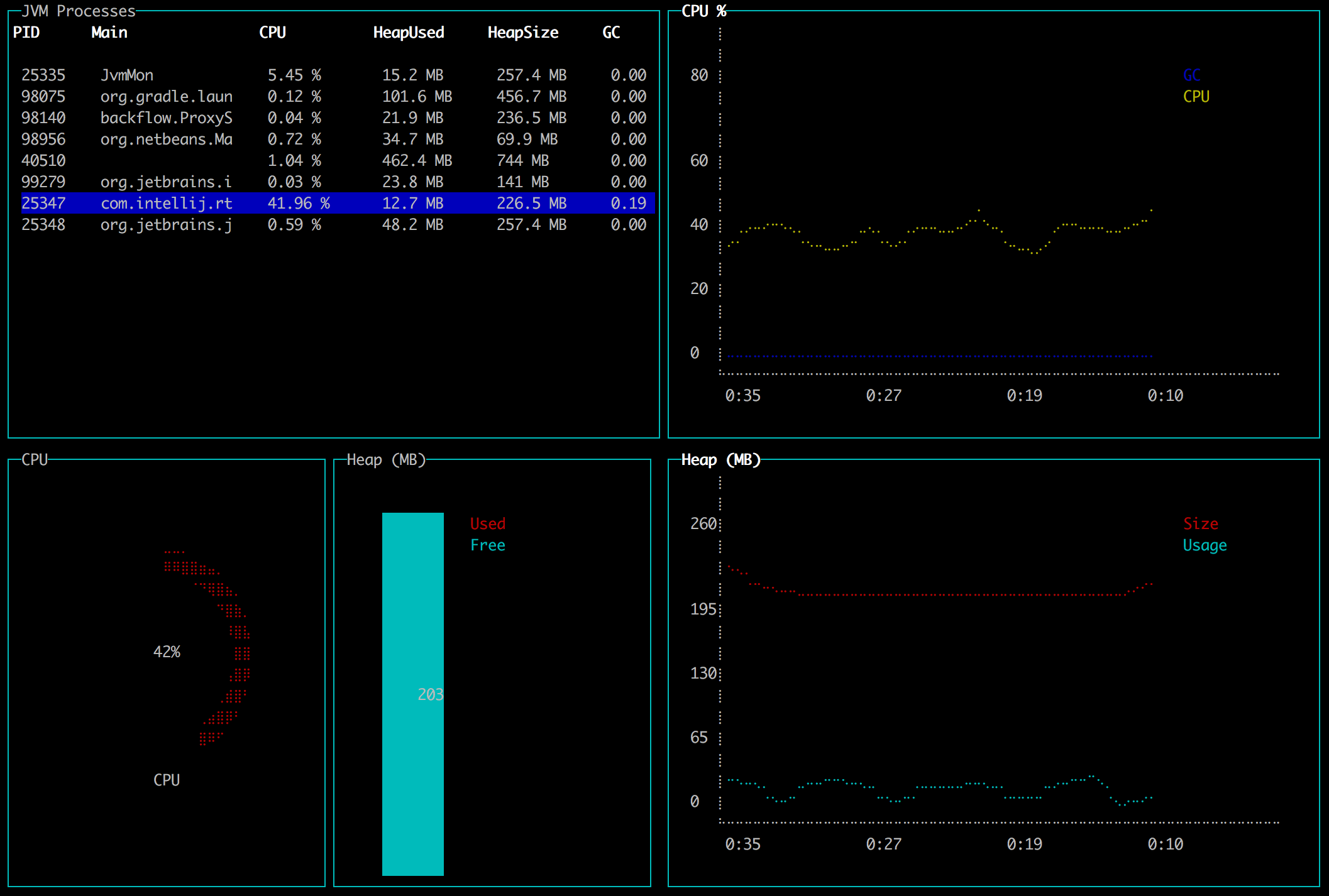jvm-mon
Console based JVM monitoring - when you just want to SSH into a server and see what's going on.
jvm-top lets you monitor your JVM server applications from the terminal.
New Version
Release: 1.0-ea1
- Rewritten in Go
- Single executable file
- Can monitor applications on Java 8 and above
- Does not require an existing JDK
How it works:
- jvm-mon executable comes bundled with a Java agent jar
- On startup it extracts the agent to a temp directory
- It attaches to the JVM you want to monitor
- Loads agent into running JVM to collect metrics
- Agent and app establish a socket connection to send metrics
Install
Requirement: a JDK8 on the server and JAVA_HOME environment variable pointing to it. It won't work with just a JRE.
MacOS
brew install jvm-mon
Linux/MacOS
- Download the release and extract
- Set
JAVA_HOMEenvironment variable:export JAVA_HOME=/path/to/your/jdk8 - Execute
./bin/jvm-monfrom extracted directory
Usage
- Select a JVM process and press Enter to monitor it
- Press q or Ctrl+C to exit
- Press Del or Backspace to kill a process
What is available
Currently it shows:
- List of running JVM processes
- Cpu and GC load
- Heap size and usage
- Top threads with cpu usage
Building from source
To build locally run ./gradlew installDist.
Then go to ./build/install/jvm-mon/ and run ./bin/jvm-mon.
To develop you will need npm on your machine and then run ./gradlew npmDeps once to get dependencies.
How does it work?
jvm-mon is a Kotlin application based on these awesome libraries:
- blessed-contrib terminal dashboard library in JavaScript
- J2V8 Java Bindings for V8 JavaScript engine and Node.js
- jvmtop Java monitoring for the command-line
The way it works is:
- The Kotlin app starts a Node.js engine in-process
- Node.js loads a script with all the widgets
- The script calls back into Kotlin to get metrics


